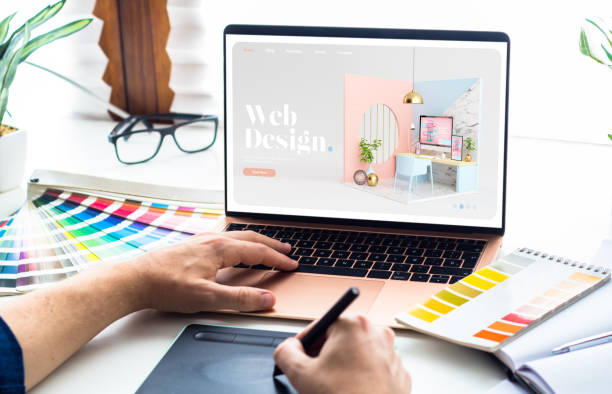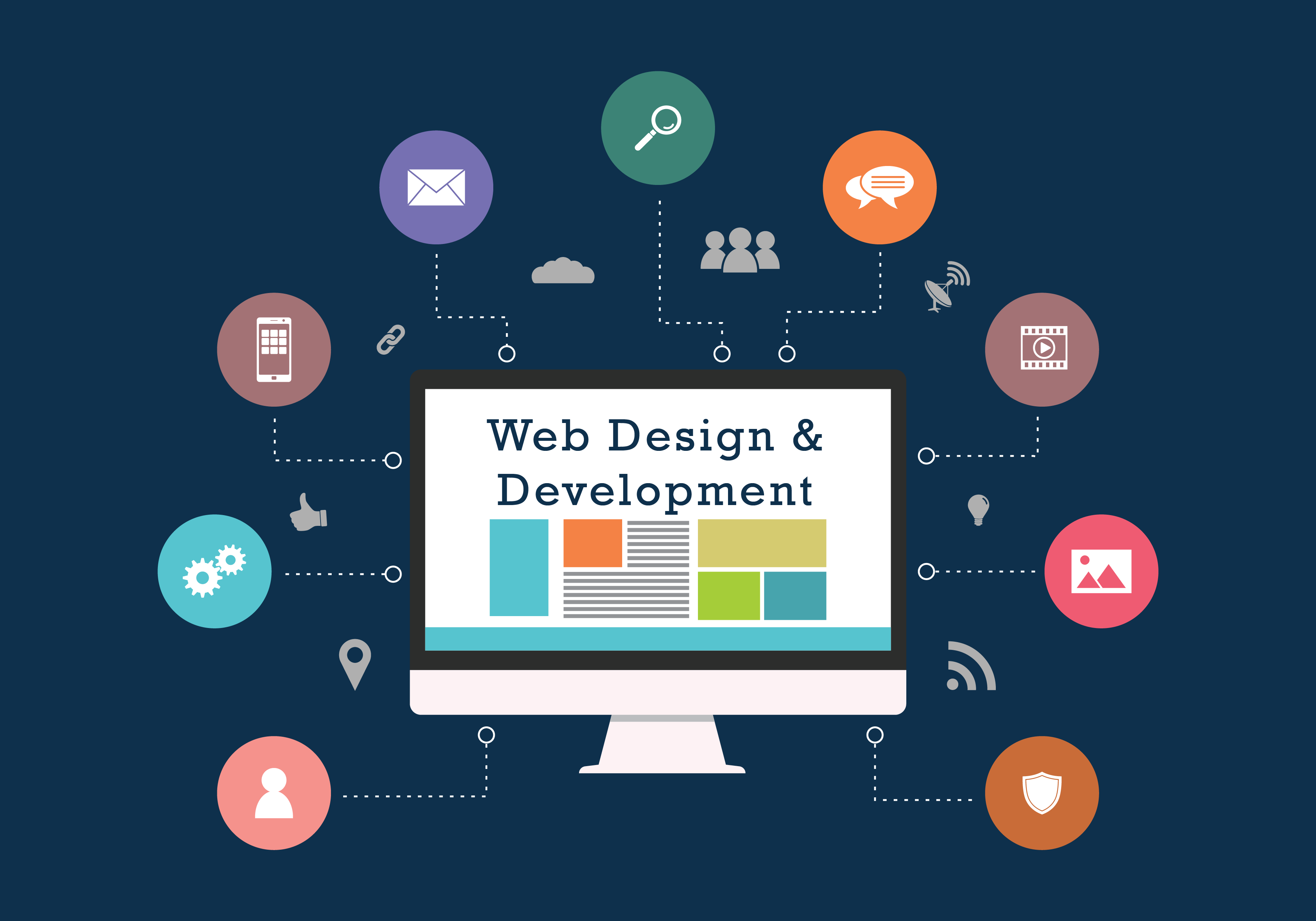Tailored Website Design Solutions for Small and Huge Organizations
Tailored Website Design Solutions for Small and Huge Organizations
Blog Article
Maximize Customer Experience With Cutting-edge Web Site Style Solutions
In today's electronic landscape, taking full advantage of user experience through innovative site layout solutions is crucial for services looking for to involve their audience successfully. The combination of interactive components can better raise the user trip, triggering a reevaluation of standard layout techniques.
Understanding User-Centric Layout

To execute user-centric design efficiently, it is necessary to carry out detailed research study, including user interviews, surveys, and usability screening. These study methods supply beneficial data that informs design choices, making sure that the end product aligns with customer assumptions. In addition, creating user personalities can assist developers visualize and empathize with the end-users, guiding the design procedure toward more appropriate solutions.
In addition, repetitive layout is an essential component of user-centric techniques. By continuously testing and refining layouts based on user responses, designers can identify discomfort factors and locations of improvement, resulting in a much more refined final item. Inevitably, user-centric design is not simply a phase in the development process however a constant commitment to prioritizing customer demands, resulting in even more engaging and efficient electronic experiences.
Value of Responsive Layouts
As electronic interactions significantly take place across a variety of devices, the relevance of responsive designs can not be overstated. A receptive layout makes sure that a website adjusts seamlessly to various screen dimensions, from desktop monitors to smart devices. This adaptability is vital in today's multi-device landscape, where customers expect a appealing and regular experience no matter how they access content.
The key benefit of receptive style is improved user satisfaction. When a site is enhanced for all tools, it decreases the need for zooming, scrolling, or horizontal navigating, which can lead and irritate individuals to greater bounce prices. Furthermore, search engines like Google prioritize mobile-friendly sites in their ranking algorithms, making receptive designs necessary for effective SEO approaches.
In addition, receptive formats promote much easier upkeep and updates. Rather of taking care of different versions of a website for different gadgets, a solitary, fluid design can be modified, saving time and sources. This all natural strategy not only boosts performance however also fosters brand comprehensibility throughout systems. Inevitably, purchasing receptive formats is not just a pattern; it is an essential principle of contemporary internet design that substantially boosts individual experience and involvement.
Enhancing Navigating and Availability
Efficient navigating and ease of access are pivotal components of a well-designed internet site, substantially influencing user engagement and fulfillment. An easy to use navigating structure enables site visitors to locate details promptly and with ease, minimizing disappointment and boosting the chance of repeat visits. Carrying out clear, descriptive labels for navigating web links, in addition to a rational pecking order, can assist customers seamlessly via the website.
Access is equally vital, making sure that all individuals, regardless of their capabilities or specials needs, can interact with the site successfully. This can be attained via the use of appropriate shade contrasts, message sizes, and alt message for pictures, which with each other enhance the experience for aesthetically damaged individuals. Including keyboard navigating and screen visitor compatibility broadens gain access to for customers with varied demands.
Regular functionality screening can offer valuable understandings into navigating effectiveness and access concerns. By collecting comments from genuine customers, developers can recognize discomfort points and make informed modifications. Ultimately, focusing on navigation and ease of access not only promotes inclusivity but also cultivates a favorable user experience, strengthening the brand name's dedication to high quality and user care in a progressively digital landscape.
Making Use Of Aesthetic Hierarchy Properly
Visual power structure acts as a guiding framework in web site layout, routing customers' focus to the most crucial elements on a web page. By purposefully organizing visual components such as typography, color, and spacing, developers can develop a clear pathway for individuals to comply with. This framework not just boosts user experience yet likewise improves material understanding.
One reliable method to develop aesthetic pecking order is through the usage of dimension and range. Larger aspects naturally bring in more attention, making headlines and key visuals noticeable. Complementing this approach with contrasting colors can even more set apart primary web content from secondary information, guaranteeing that important info sticks out.
Moreover, the plan of components plays an important function in guiding individual communication. Employing a grid design can create a cohesive flow, while whitespace aids to separate web content and lower cognitive lots - Website Design. This intentional spacing permits individuals to refine info much more quickly, leading to enhanced engagement
Lastly, using consistent layout patterns helps reinforce visual hierarchy, providing individuals with acquainted signs as they browse the site. By prioritizing these concepts, designers can efficiently make the most of customer experience, guaranteeing that site visitors can effortlessly situate the details they look for.
Integrating Interactive Aspects
The unification of interactive components into web site design can substantially enhance user involvement and overall experience. Interactive attributes such as tests, sliders, and surveys not only astound individuals yet also advertise active participation, making the surfing experience more unforgettable. By motivating users to engage, websites can properly keep interest and decrease bounce prices.
Furthermore, integrating vibrant content like animations and hover results includes an attractive layer of interactivity. These elements can guide individuals with ease through the website, highlighting essential info and contacts us to activity. Animated switches can attract interest and enhance click-through read prices.
Moreover, personalization with interactive devices such as chatbots or referral engines enables internet sites to satisfy individual choices, cultivating a sense of connection. This customized approach not just improves individual satisfaction but also encourages repeat brows through.
Integrating analytics tools to track communications read review provides useful understandings right into user actions, making it possible for continual enhancement of the interactive elements. Eventually, a properly designed interactive experience transforms a passive browsing session right into an appealing trip, resulting in enhanced user complete satisfaction and loyalty. Therefore, incorporating interactive components is vital for maximizing individual experience in modern website style.
Verdict

In today's electronic landscape, optimizing user experience with innovative internet site layout options is necessary for organizations seeking to engage their audience efficiently. Eventually, prioritizing navigating and access not only fosters inclusivity yet also cultivates a favorable customer experience, enhancing the brand's dedication to top quality and user care in an increasingly electronic landscape.

In conclusion, making best use of individual experience through cutting-edge internet site design options necessitates a commitment to user-centric concepts. Website Design.
Report this page